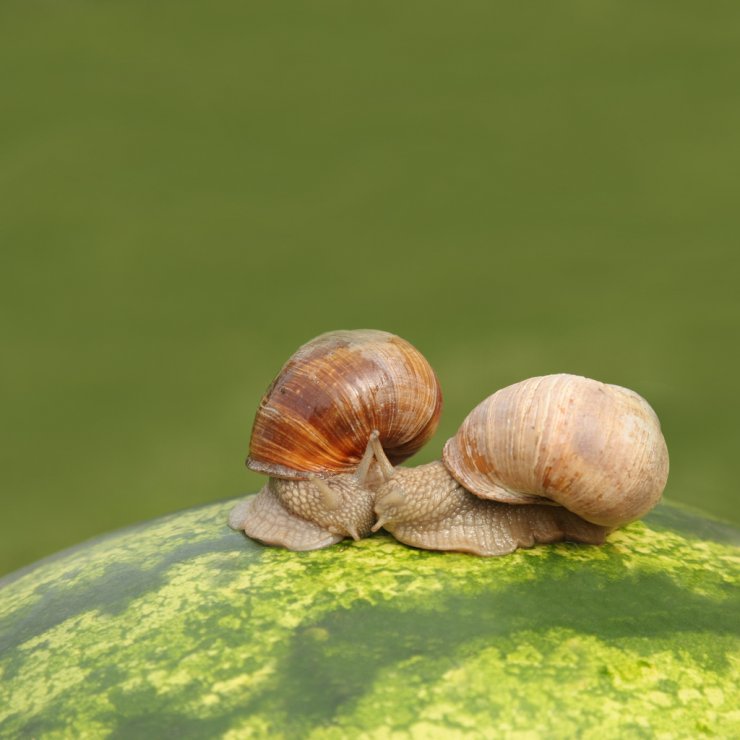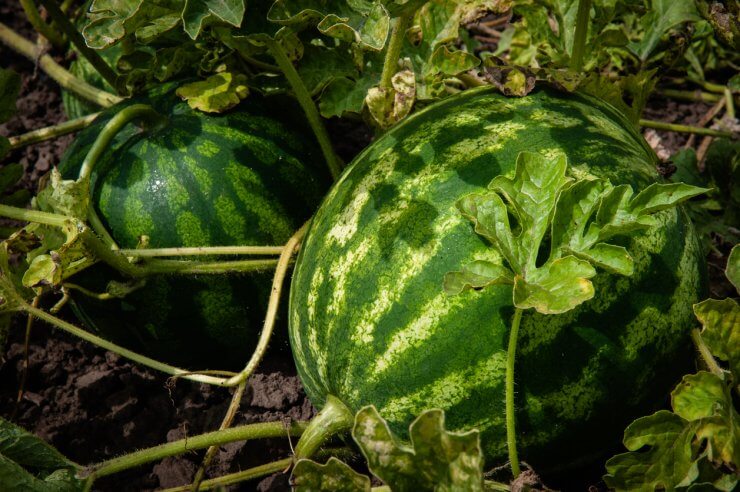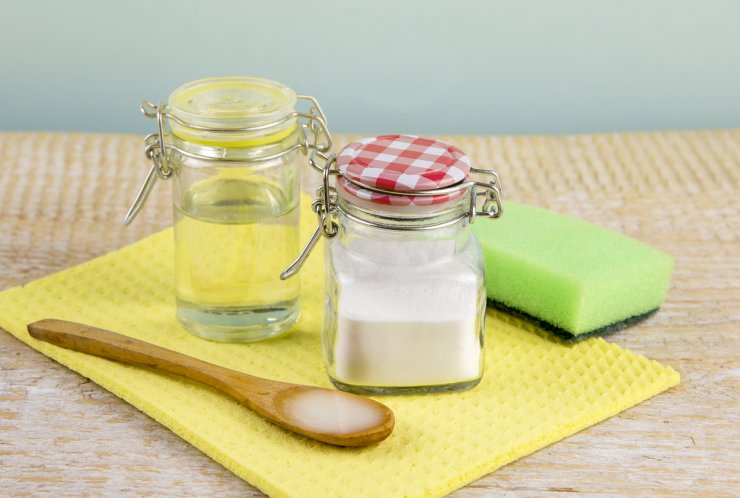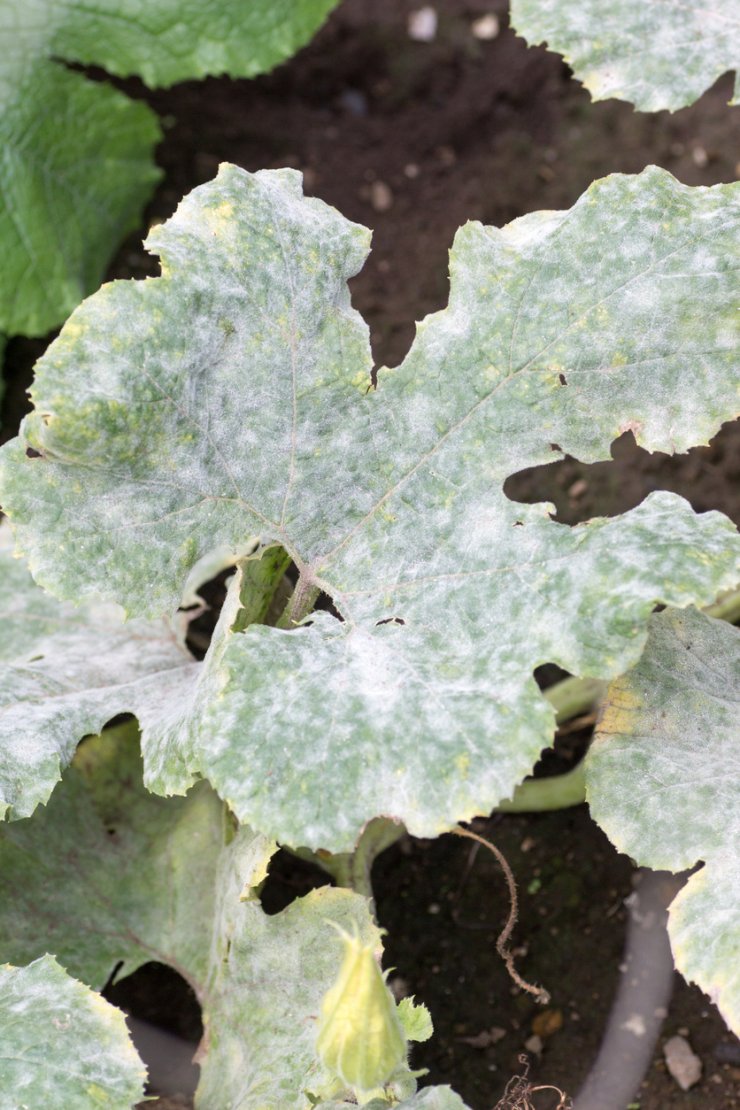What to do about Pests

Snails on Watermelon
Watermelons are susceptible to aphids, cucumber beetles, flea beetles, squash bugs, squash vine borers, slugs, and snails. A good layer of mulch will help keep soil-based pests away from your vines. But keep an eye on your plants, remove any invaders when you can, and use an insecticidal soap or neem oil as necessary. These are organic materials that don’t harm you, the gardener, but be careful to follow directions on the package so you don’t harm the watermelon plants with over-concentrated liquid. And be sure to pinch off any damaged leaves.
-
- Another care tip: When you have fruit, place a board, tile or piece of plastic underneath it. This not only keeps away pests, it will also help prevent rot and soak up the sun’s warmth to help warm up the melon.
Avoiding Plant Diseases

The beginnings of a possible plant disease
As for diseases, you may run into bacterial wilt, fusarium wilt, downy mildew, powdery mildew, anthracnose, and alternaria leaf spot. The best way to handle these diseases is prevention, starting with watering at the base and not from above. Wet leaves are more susceptible to diseases.
Also, starting with well-composted soil will generate stronger plants that are resistant to diseases. Then, keep your garden beds clean and weed free. Remember not to handle vines when they’re wet, as that can spread disease.
DIY Pest Control and Fungicides

Natural pest spray ingredients
For fungal diseases, prevent and slow the spread by regularly using a misting spray of compost tea or a solution of one part skim milk and nine parts water. For bacterial diseases, prevention is best done by controlling the insect population with insecticide.
You can also make your own pest spray that will repel all kinds of bugs, and even acts as a fungicide for mildew. Mix 1 tablespoon of baking soda, ½ teaspoon of a mild dish detergent, and 2 ½ tablespoons of olive oil in a gallon of water. Shake it well in your bottle before spraying and repeat every week for it to be continuously effective.
Spotting the Diseases

Powdery Mildew on Leaves
Powdery mildew is a fungal disease that affects a wide variety of plants. There are many different species of powdery mildew, and watermelon is one of the plants most susceptible to it. It looks like a white powder on your plants.
Downy mildew affects many plants and appears as yellow to white patches on the upper surfaces of older leaves. On the undersides, these areas are covered with white-to-grayish, cotton-like fungi. These “downy” masses are most often noticed after rain or heavy dew and disappear soon after sunny weather resumes. As the disease progresses, leaves may eventually turn crisp and brown and fall off even though the plant has ample water.
Bacterial wilt describes itself: a wilting of the plant caused by bacteria. The first sign, which appears about five days after infection, is the wilting of individual leaves on a single stem. However, the disease will soon spread down the runner and then infect the whole plant, causing it to shrivel and die.
Fusarium wilt is a common vascular wilt fungal disease in which the plant turns brown and wilts noticeably.
Anthracnose, a soil-borne fungal disease, can cause leaf spots, leaf drop, wilting and sometimes death. Fortunately, many watermelon varieties have been bred to be resistant to this disease and others, so choose these when you can.
Symptoms of watermelon anthracnose can vary and affect any or all visible parts of the plant. This includes small yellow spots on leaves that spread and darken to black. If the weather is damp, fungal spores will be visible as pink or orange clusters in the middle of these spots.
If the weather is dry, the spores will be gray. If the spots spread too far, the leaves will die. These spots can also appear as stem lesions.
Additionally, the spots can spread to the fruit, where they appear as sunken, wet patches that turn from pink to black with time. Small infected fruit may die.
Alternaria leaf spot is another fungal disease that looks like its name: yellow or brown patches on leaves that look like decay.
In short, you can fight disease with insecticide and fungicide, and by keeping your garden clean and leaves dry. If you do spot the signs of disease, remove diseased plants from the garden immediately. Destroy these plants and don’t throw them into a compost pile!
Finding Disease-resistant Plants and Seeds
When deciding on which watermelon variety to plant, you may see several letters on labels intended to help you find disease-resistant plants. They are:
- AAS: All-America Selection (resists most diseases)
- AN: Anthracnose resistant
- F: Fusarium diseases resistant
Have you ever lost watermelon plants to pests or diseases? How have you handled preventing pests and diseases? Please share your tips for growing healthy watermelons.


 Previous
Previous


What about pruning the vines or remove some blossoms to strengthen other watermelons growing?